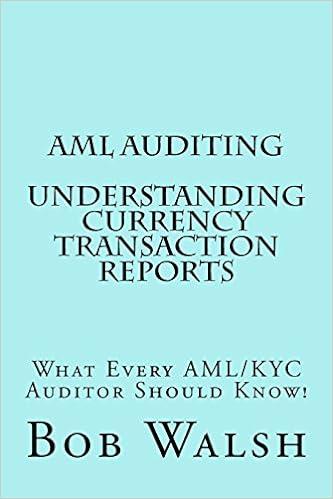Question
Questions Below (The other parts are documents to fill the answers for and also info needed to answer the questions) Use Table A and B
Questions Below (The other parts are documents to fill the answers for and also info needed to answer the questions)
Use Table A and B to fill out the incomes tatement and balance sheet.
Use the information provided in Table A to fill out income statement using EBIT method for the year ended 2022.
Use the information provided in Table B to fill out Balance sheet for the year ended 2022. The rest of the questions is based off of those!

Data for Table A ( income statement ) and Table B (Balance sheet)

Boxes to fill in using info above for table A and B




2. Calculation and data presentation. (20 marks) a. Use Tables A to prepare the income statement (using the EBIT method) for the year ended 2022. b. Use Tables B to prepare the balance sheet (using the statement method) as at 2022. c. Create a fully labelled pie chart for the product's capital structure. Fully labelled means that you must include the title, legend and the percentages for each segment of the pie. The capital structure should contain total liabilities and total equity. You should create the pie chart in Excel then copy and paste it into your Word document. d. Ratio analysis - Calculate the following two ratios for the EVB: quick ratio and net profit ratio. The industry average ratios are provided for you to make comparisons. e. Prepare Cost-Volume-Profit (CVP) calculations for the EVB. 3. Business decision - use key information you have calculated from requirement 2 to explain and support your decision whether or not the EVB should be manufactured. You will also need to use statistical data provided at Table C to justify your decision (no calculations are required). Electric Vehicle Battery (EVB) Data for the Income Statement The projected total sales for the EVB for the year ended 30 June 2022 are $8,000,000 and the projected total costs and operating expenses are as follows: Table A Item Amount ($) 1,200,000 Cost of goods sold Sales Salaries expense 450,000 Office Salaries expense 400,000 Advertising expense 350,000 Office supplies expense 328,000 Rent expense 840,000 Insurance expense 230,000 Utilities expense 290,000 Depreciation expense 282,000 280,000 Interest expense Interest revenue Tax expense 80,000 350,000 Data for the Balance Sheet The projected assets, liabilities and equity of Battery for Life Ltd as at 30 June 2022 are as follows: Table B Accounts Amount ($) Accounts receivable Accounts payable Bank Capital Dividends paid Equipment Fixtures GST Collected GST Paid Inventory Land and Buildings Mortgage 4,680,000 5,200,000 950,000 15,000,000 650,000 12,000,000 2,500,000 800,000 350,000 1,950,000 28,000,000 27,000,000 2.1 Income Statement Battery for Life Ltd Projected Income Statement for the year ended 30 June 2022 $ $ Sales Gross Profit Operating Expenses Operating Profit/EBIT Profit before tax Net profit 2.2 Balance Sheet Battery for Life Ltd Projected Balance Sheet as at 30 June 2022 Current Assets $ Non-Current Assets Total Assets Current Liabilities Non-Current Liabilities Total Liabilities Net Assets Equity Total Equity Ratio Analysis Two of the most important ratios are the quick ratio (or acid test) and the net profit ratio. The company would like to know what these two ratios indicate and how they compare to the industry average. Assume the industry average for the quick ratio is 0.80 time (or 0.80:1) and for the net profit ratio is 43.50%. Round your answers to 2 decimal places and ensure to include the correct unit/expression, such as time and %. Page 3 of 4 Cost-Volume-Profit (CVP) This section relates to Table A. Each electric car battery sells for $6,400 and the variable cost per battery is $1,600. Variable costs include sales salaries, advertising and cost of goods sold. All other costs are fixed, and they totalled $3,000,000. Determine: 1. the contribution margin (CM) in dollars per unit ($/unit) 2. the break-even point (BEP) in units 3. the sales units required to achieve a profit $7,000,000 Where applicable, round your answers appropriately to whole numbers, especially the BEP and sales units. Statistical Data The data contained in the table below relates to the business decision section 3.2 of the Word template. At this section, you are asked to include a brief explanation of the statistical data from Table C below for the EVB compared to the industry average and how the data is used to support your decision to manufacture or not manufacture the EVB. Table C Electric Vehicle Battery (EVB) Industry Average 80% 85% Mean success rate (last 5 years) Standard Deviation of success rate 6% 10% 2.3 Ratio Analysis (round your answers to 2 decimal places) (ensure you include the relevant unit/expression such as time and %) Formula 2022 Industry Average Quick (Acid-test) ratio Current Assets-Inventory Current Liabilities 0.80 time Net Profit Net Profit ratio -x100 43.50% Sales 2.4 Cost-Volume-Profit (where applicable, round your answers appropriately to whole numbers, especially the BEP and sales units) (ensure you include the relevant unit/expression such as $ or unit) Working Answer Electric Vehicle Battery Contribution Margin (CM) 1 ($/per unit) 2 Break-even point (BEP) (in units) 3 Sales units required for $7m profit (in units) 3. Business Decision (approximately 475 words) 3.1 Overall decision and rationale (Decide whether or not the company should manufacture EVB and incorporate the key data you have calculated from requirements 2.1 to 2.4 to support your decision) (approximately 375 words) 3.2 Consider basic statistics to aid decision (Use statistical data provided in the guide to explain the mean and standard deviation success rates to justify your decision) (approximately 100 words)
Step by Step Solution
There are 3 Steps involved in it
Step: 1

Get Instant Access to Expert-Tailored Solutions
See step-by-step solutions with expert insights and AI powered tools for academic success
Step: 2

Step: 3

Ace Your Homework with AI
Get the answers you need in no time with our AI-driven, step-by-step assistance
Get Started


